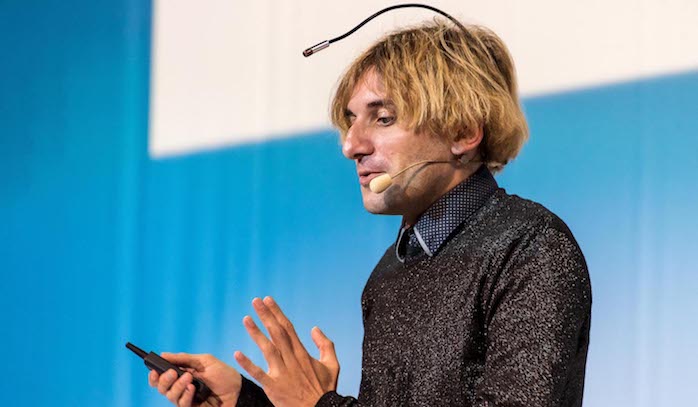1-Sas Viya
Our annual Forum is an excellent opportunity to catch up on the latest product innovations. So, obviously, many attendees were highly interested in the keynote held by Mike Frost, Director of Product Management for Cloud and Platform Technologies at SAS. He highlighted the newest developments around SAS Viya, the scalable cloud infrastructure for high performance analytics: the possibility to integrate with many different programming languages, its openness allowing you to embrace open source technologies, and many more.
2-SAS creates chances
SAS creates chances, indeed: not only for our customers and partners, but also for the less fortunate and less privileged among us. During this SAS Forum, we highlighted some of the organizations that we have helped in the course of the past year. From renowned organizations such as Vredeseilanden to more local and less known initiatives such as Rondpunt (assisting victims of a traffic accident) and Violet’s Belgian-Syrian music collaboration: each not only received financial support from SAS but also an opportunity to briefly present themselves to a wider audience.
3-Inspiring customer stories
More than anything else, however, customers attend SAS Forum to find out how their peers are putting the technology to innovative use. By networking and attending hands-on sessions, but also by listening to the fascinating stories told by fellow customers such as Belfius (“Inspired by Silicon Valley as well as the Far East, where innovation is really happening”), Starbucks (on how to monetize the data from their payment and ordering app), What the Shop? (combining geofencing with real-time decision management), and P&V (improving the customer service thanks to predictive analytics)
4-Data in the football world
And now for something completely different: football. A market that is worth €25 billion (+ €1350 billion in gambling and another €100 billion in gaming). The number of data available on sports is growing and widely available. So analytics can make a difference. SciSports’ use of data intelligence in the football industry can revolutionize the way people think about the use of data in football. SciSports was in the news last summer when helping Dutch football player Memphis Depay make the right choice for a new club using this data intelligence (he chose Olympique Lyon). SciSports’ latest innovation is BallJames, which collects 3D data from a football match - such as ball speed or body posture - using 14 cameras along the field, and creating statistics of more than 100 variables in their SciSkill Index. This index calculates player’s potential and market value. “We’ve beaten the bookies using our SciSkill Index.” Discover in this vlog with CEO Giels Brouwer more details about Scisports’ creative use of analytics. (in Dutch)
5-CDO debate
What about analytics in practice? What does it mean for businesses? Starting from research by Jonas Vandenbruaene, student at the University of Antwerp, an interesting debate was held on the use of analytics and the rise of the CDO. Philippe Van Impe (Brussels Data Science Community) led the panel consisting of analytics experts with many years of experience at international companies.
Lack of skilled people bridging the gap between analytics and business leads to 48% of analytics ambitions failing to reach expectations; the role of Chief Data Officer is important but not very clearly delineated (do they need to team up with a Chief Analytics Officer, like Batman & Robin?); these are but a few topics discussed during this lively debate. Probably one of the most interesting summarizing observations: "The business is the people who are taking the decisions. The CDO should be one of the trusted advisors.”

6-Everybody Cyborg?
The ultimate embodiment of the New Possible was invited as our closing keynote speaker: Cyborg Neil Harbisson, co-founder of the Cyborg Foundation. He was born color blind and implanted an antenna in his head several years ago. This antenna has a camera / sensor that converts the waves of colors into audible signals. This way he can hear ‘colors’. Merging ourselves with technology is no longer a theory, Harbisson argues: “I didn't want to use technology, I wanted to be technology”. According to Neil, artificial senses are shaping the future, even more than artificial intelligence: “Data will become a sense.” And he ended with a sustainable message: “It is time we stop redesigning our planet, and start redesigning ourselves.” How about that as a final takeaway?
If you want to feel the same as #cyborg Neil Harbisson, then check the #Eyeborg app and listen to the sound of colours! Or check his website or this TED talk.